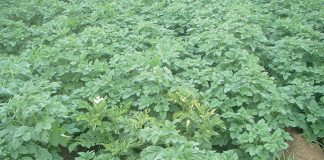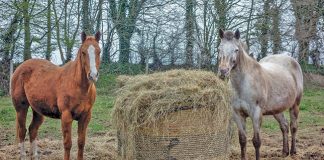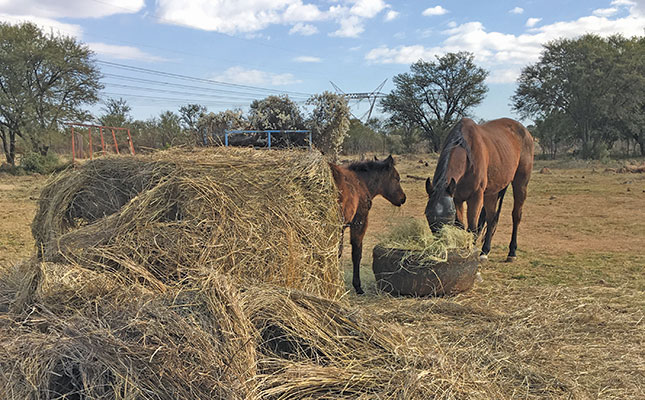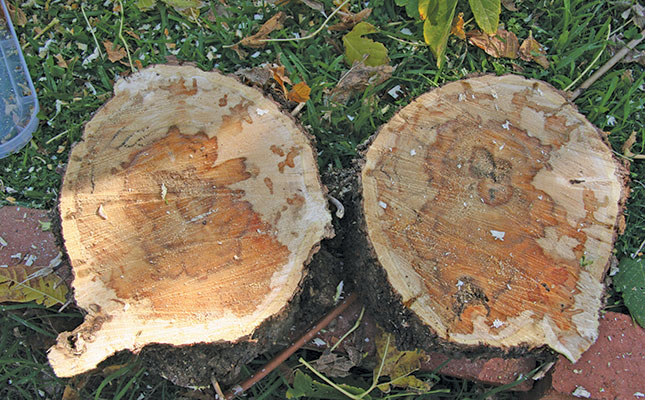
Photo: Prof Wijnand Swart
The polyphagous shot hole borer (PSHB) is a relatively new threat to trees in South Africa. Yet such has been its trail of destruction that researchers, scientists, horticulturalists, tree farmers and landscapers have been left scrambling for a cure.
The problem is that once a tree is attacked by PSHB, little action can be taken to save it. All that remains to be done is to fell the entire tree, dispose of the deadwood appropriately, and hope that the pest has not spread to any other trees. Around the globe, the PSHB (Euwallacea fornicatus) has a wide range of hosts, and can infect over 200 species of trees.
The beetle
Prof Wijnand Swart, head of plant pathology at the Department of Plant Sciences at the University of the Free State in Bloemfontein, is one of the researchers who has been alerting the public to the presence of the pest in Bloemfontein.
According to him, the problem is not so much the vector, but the fungus Fusarium euwallaceae that it introduces into the tree.
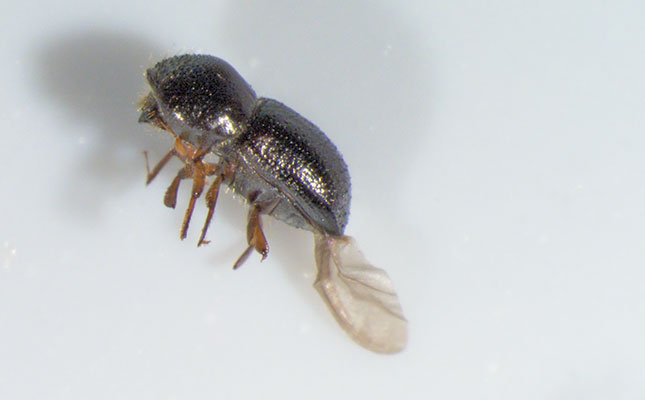
“The beetle carries this fungus around, and after it bores a hole into the tree, it lines the gallery [nest] where it lays its eggs. It’s basically a fungus farmer,” he says.
The beetle damages the phloem and xylem of the tree with its hole-boring habit, but the real danger is the fungal infection: this eventually kills the tree.
PSHB, which originated in Vietnam in Asia, is believed to have been introduced into South Africa via wooden pallets used in the shipping industry. While the beetle can infect a large variety of tree species, only some are suitable as reproductive hosts.
These include foreign trees such as the English oak (Quercus robur), box elder (Acer negundo) and London plane (Platanus x acerifolia), as well as indigenous trees such as the coast coral tree (Erythrina caffra) or fever tree (Acacia xanthophloea), and important commodity trees such as the avocado tree (Persea americana).
The PSHB also infects trees that are considered non-reproductive hosts. While the PSHB will bore into these trees and introduce the fungus, the trees are not suitable for the rearing of its offspring.
“Even when it has bored its way into a non-reproductive host and leaves the tree, it has already damaged the phloem and xylem of the tree and propagated its fungi,” Swart explains.
Non-reproductive hosts are negatively affected by the fungus, but reproductive hosts are in greater danger. These trees will eventually die off, but not before potentially hundreds of thousands of new borers have hatched.
According to Swart, the sex ratio of the young beetles is female-biased. These can go on to colonise and kill other host trees within a flying range of about 1km.
A third category of tree, namely resistant species, is avoided entirely by the borer, says Swart. Part of the multi-faceted response to the threat is to plant resistant trees to replace those that die after becoming infected. However, not enough research has been done at this stage to determine which tree species are highly resistant to PSHB.
Creeping contamination
Swart says the beetle and the fungus are always found together, and their presence in South Africa was only officially confirmed with the publication of an article in 2018.
This was based on the findings of Dr Trudy Paap of the Forestry and Agricultural Biotechnology Institute of the University of Pretoria, who had identified PSHB on London plane trees in the Pietermaritzburg Botanical Garden in KwaZulu-Natal.
The spread of PSHB was soon confirmed in trees across the country, including those in Johannesburg. Cape Town was also hard hit, and the pest is now wreaking destruction in Bloemfontein.
The evidence is easy to miss, and Swart believes there are numerous cases in which people may have attributed the death of their trees to other causes, such as drought.
“All of the oak trees at the Stadium Swimming Pool in Bloemfontein are dying, for example, and there are entire streets of London plane trees in the suburb of Fichardt Park that have also died,” he says.
To make matters worse, the fungus remains viable even after the tree has died, allowing the disease to spread. The wood of dead trees is full of fungal spores, beetle eggs and larvae, and if it is not properly disposed of, the beetles that breed out will infect surrounding trees.
Infested wood should be chipped into pieces smaller than 2,5cm, or burnt in a sealed environment, to prevent the beetles from escaping.
Symbiosis
The shot hole borer measures about 2mm in length, and is one of only 10 of about 3 500 species of beetles from the family Ambrosia that are considered tree killers.
It has mycangia (fungus pockets), which Swart describes as tiny pouches, almost like saddlebags, in its mouthparts. These are used to carry fungal spores, which are sown into the stem of a tree as the beetle bores its way in.
“These beetles can bore up to 2cm within hours,” Swart says, adding that as they move into the tree, they push the sawdust into the passage behind them, creating a plug.
“At the same time, they sow their fungi as they plough their way into the green wood of the tree.”
The beetle will then lay its eggs inside the stem and create a gallery, where the eggs will form pupae that eventually become beetles that will fly away to establish new galleries.
The fungi with which the beetle has inoculated the tree, including the pathogenic F. euwallaceae and other fungi considered more saprophytic in nature, such as Graphium spp and Acremonium spp, will meanwhile spread into the woody tissue.
The colonising fungi result in lesions and dead spots within the stem. Infected areas of the tree die off one after the other, eventually resulting in enough damage to the tree’s vascular system that branches die off.
Effect on agriculture
Dr Gert Marais, also a plant scientist based at the University of the Free State, specialises in fungi. He consults for the South African Pecan Nut Producers’ Association, and says that while hundreds of fungi are associated with pecan orchards, these trees are considered non-reproductive hosts for PSHB beetles.
Unfortunately, pecans are still susceptible to the damage caused by the PSHB fungi. According to Marais, only two cases have so far been identified in pecans in South Africa, with one of these a single tree in an orchard in Mpumalanga.
The more worrying case was an orchard in Jan Kempdorp in an important pecan production area in the Northern Cape. However, the pecan infestation has since been attributed to the spread from infestations in two stands of reproductive hosts colonised by the pest.
“At a school adjacent to the pecan orchard was a row of oak trees, and on the other side, a farmhouse with oaks that were infested with the beetles. An ongoing invasion by new beetles into the orchard provided a source of constant inoculation and infestation.”
Marais stresses the importance of vigilance. He also highlights that other tree farmers, such as avocado producers, are potentially at greater risk.
“PSHB caused major problems in the commercial avocado industry in the US,” he says.
“I’m not aware of its being found in any commercial avocadoes here in South Africa, but it has been confirmed in an individual avocado tree in a garden in Johannesburg.”
Citrus trees and other fruit trees, such as peaches or apricots, for example, are possibly also at a similar risk to pecan trees, as most of these appear to be non-reproductive hosts.
Wasps
Very few chemicals are effective against the PSHB. Swart says that one of the only chemicals known to work is Imidacloprid, which has been banned for use in Europe as it was linked to killing bee colonies.
Pheromone traps can be used to try to capture the beetles and limit the number getting through to trees, but these are considered costly options that are not 100% effective.
Many researchers are also actively pursuing biocontrol options, ranging from the use of predatory bugs to targeting the fungus with parasitic fungi and bacteria.
Swart is personally involved in a hunt to find a tiny parasitic wasp he hopes could prove the solution to the problem here in South Africa. He says that after the outbreaks elsewhere in the world, scientists had explored the possibility of introducing the natural predator of PSHB, a parasitic wasp of the family Eulophidae, which is also indigenous to Vietnam.
However, introduction of an exotic species as a biocontrol measure requires extensive, long-term testing.
Swart believes that South Africa might already have a parasitic wasp of the same
family. He does not yet know if it is an indigenous variant or if it arrived in the country in a similar manner to the first PSHB beetles.
If it is the Vietnamese wasp, and scientists can find more and prove that it is already present in South Africa, this would speed up the process to getting approval to use it as a biocontrol measure to curb PSHB infestation.
Further reading: The website treesurvey.co.za lists species that are considered non-reproductive hosts of PSHB; they include pecan, orange, peach, apricot and olive trees. A corresponding mobile survey app indicates PSHB infections have been reported in over 150 tree species in South Africa.
Email Prof Wijnand Swart at [email protected], or Dr Gert Marais at [email protected].








